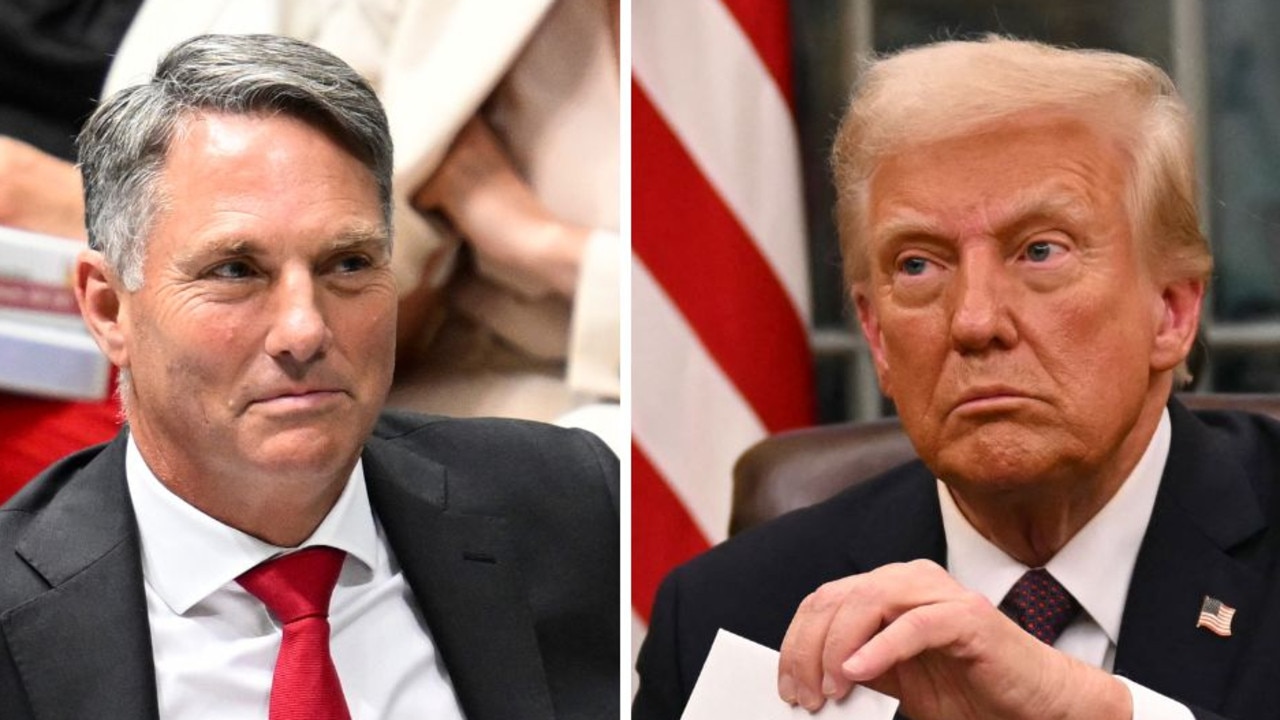Thrills of the past: Australia’s forgotten theme parks and what kept them alive at the time
Australia’s forgotten theme parks are still fresh in the minds of the patrons who got their thrills there. Come take a ride as we look back in time at the now vanished hot spots of the past.
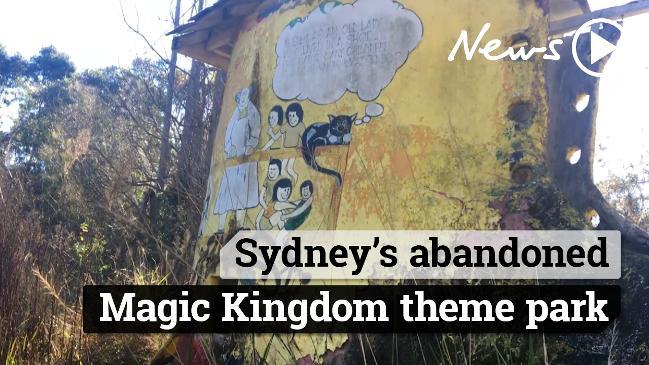
Companies
Don't miss out on the headlines from Companies. Followed categories will be added to My News.
Each time a theme park closes its doors for the final time a heavy sigh can be felt nearby.
Dozens of celebrated venues across Australia have shut up shop in the last few decades as families turn to other ways to keep the kids occupied.
The ‘Dreamworld effect’ in the aftermath of the horror that happened there recently has also had a clear impact on parents enthusiasm to take the kids on rides, and they’re not just avoiding the offending park, they’re avoiding them all.
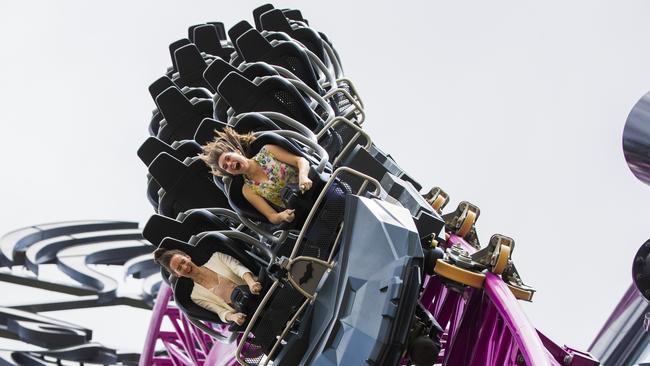
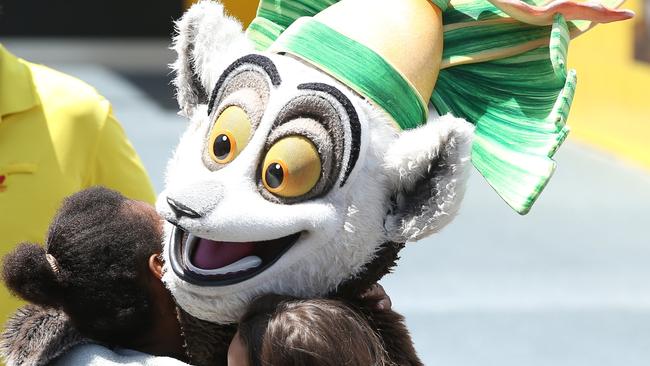
Overall, Australia’s theme park industry has performed poorly in the past five years, and things got even worse in wake of the Dreamworld tragedy in 2016 when the risk for families became more than a quick, harmless thrill.
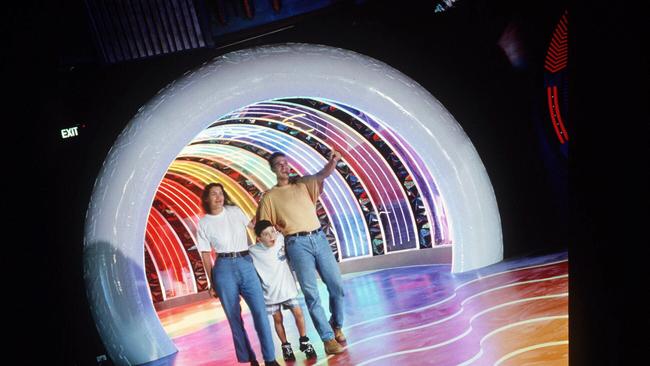
Why pay $200+ for a day out with the kids, when you can spend about as much on video games and online apps and keep them occupied safely at home?
Still, it’s undeniable that nothing quite lights up the face of a child than telling them they’re about to see Mickey Mouse, Snow White or Bugs Bunny in real life.
Throw in the chance to show off how tough they are by riding the biggest, baddest, fastest and highest roller-coasters and the lifetime of nostalgia that you get from facing your fears, beating mum and dad at carnival games and stuffing your face with fairy floss and you’re likely to have a memory that will stick for years and years.
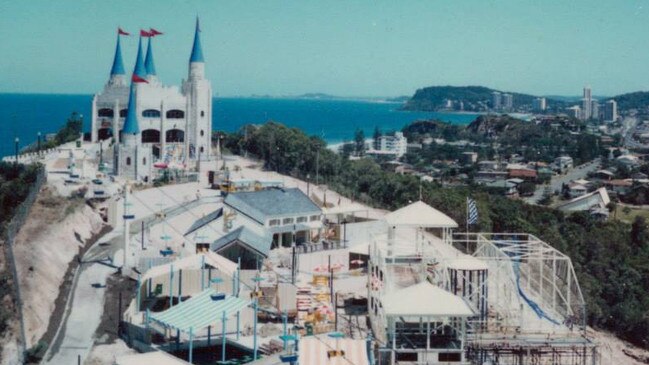
I can’t remember when I beat the last boss in Crash Bandicoot for the first time on PlayStation (it probably happened way too many times to be special) but I do remember walking through the gates of Movie World for the first time at about the same age.
I can’t recall what games I had on my Sega Master System, but I can 100 per cent remember that one time I went to Sega World. Remember that short-lived game inspired wonderland that opened smack bang in the middle of Sydney’s Darling Harbour? It eventually flopped and now a giant Commonwealth Bank building stands in its place. But every time I walk to through the area, which is vastly different compared to back then, I smile and think of my all time favourite memory there. Yep, it’s Sega World.
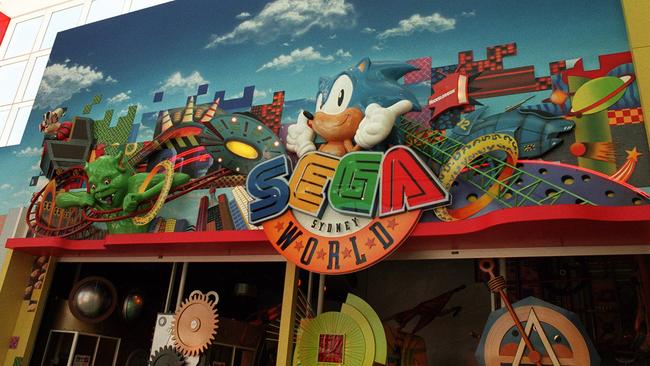
Murdoch University Tourism Lecturer Dr Eunice Tan said the young and old’s attraction to theme parks was purely about “escapism.’
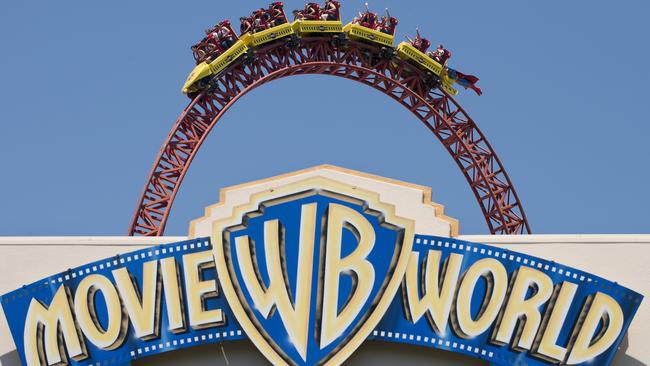
“It’s about creating a pleasurable and immersive environment that is delightfully and distinctively different from the outside and/or their usual day-to-day experiences.” Dr Tan said.
“It must be able to capture their imagination and interests, it must allow them to escape reality. Fundamentally, theme parks are about escapism and hedonistic experiences.”
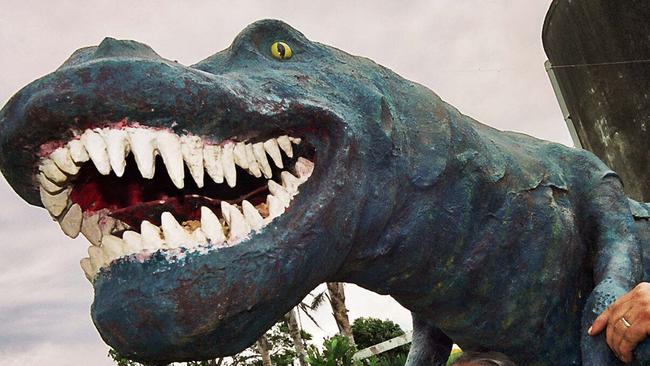
While the industry has taken a noticeable financial hit in recent years, Dr Tan said theme parks were still a viable moneymaker in Australia “if developed and positioned appropriately and to the right audience.”
Still, she said existing theme park operators had a big job to do in terms of securing constant patronage.
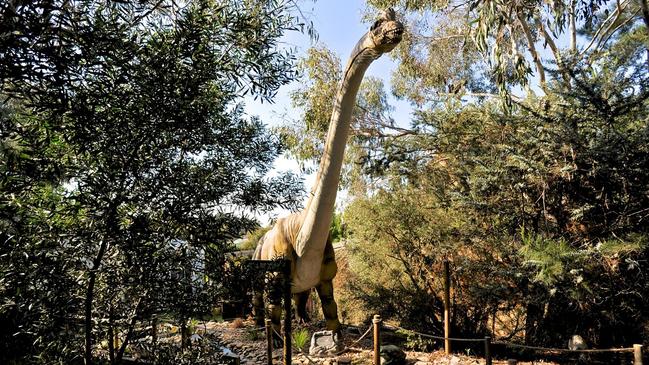
“At the end of the day, visitors want to know that their health and safety will not be compromised whilst enjoying a fun family day out. They also would want to be assured that the theme park operators and / or owners are accountable for ensuring that safety. However safety is of course not the only consideration … freshness and attractiveness also matter.
“These factors will certainly impact on revisit intentions. Consumers have choices, and will bring their business elsewhere to safer and more interesting alternatives. Nonetheless, I believe, yes, it is possible to bounce back — but not if it is business as usual.”
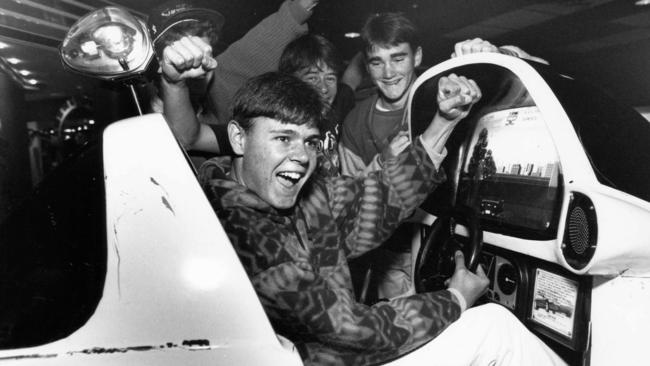
While the Gold Coast still holds its grip onto the title of theme park capital of Australia, with the ‘big four’ (Movie World, SeaWorld, Wet n Wild and Dreamworld) all located there, Australia as a whole has seen many short-lived but well loved attractions come and go over the years.
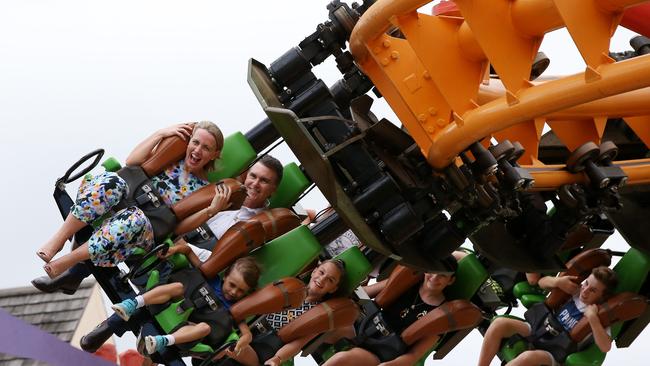
Below we take a ride back in time to visit some attractions that once had plenty of patrons, and are now a distant memory.
If anything, the list serves as a reminder to enjoy the thrills while they last.
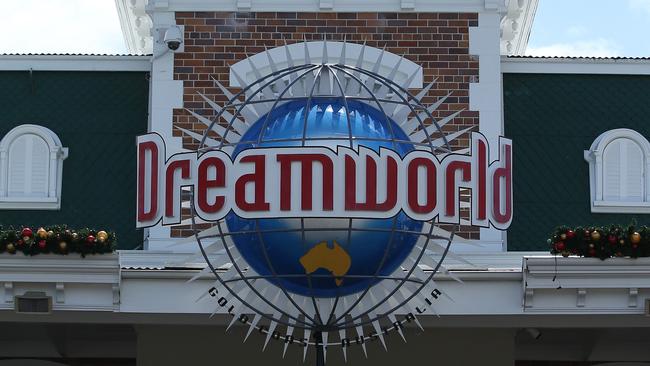
NSW
Wonderland, Sydney
1985-2004
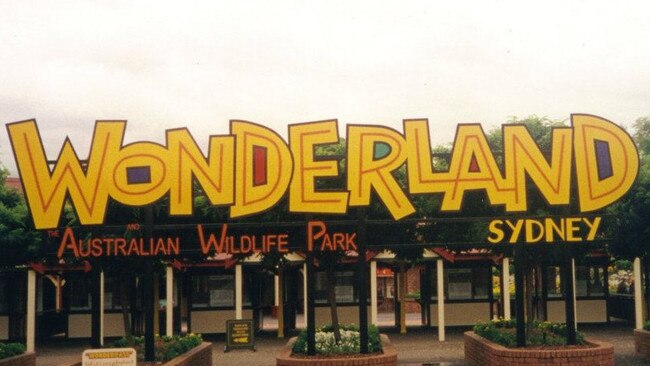
Originally known as Australia’s Wonderland, probably the most well known forgotten theme park was located in Eastern Creek. It was opened in 1985 by then-premier Neville Wran and at the time it was considered the largest theme park in the southern hemisphere. At the time it was opened as an alternative to Luna Park.
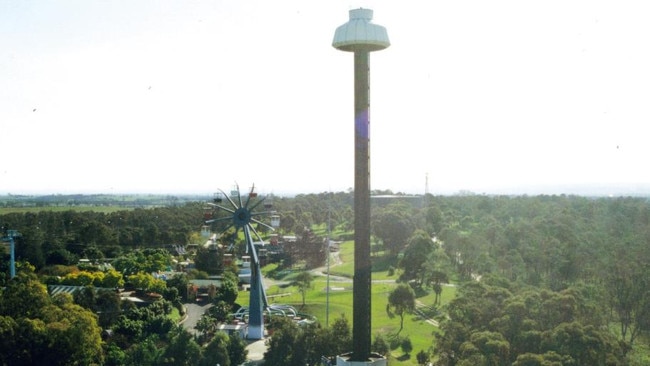
Wonderland lost it’s spark in 2004 and the lights were turned off. While it was active it was home to The Bush Beast — the largest wooden roller coaster in Australia.
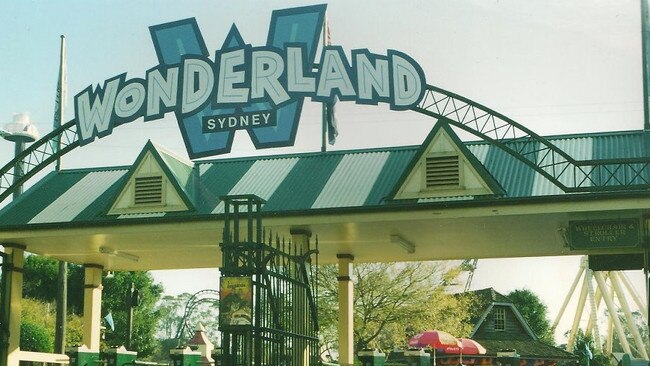
Western Sydney developer Ammar Khan has shared plans to revive wonderland with a new improved version in 2021 called Worlds of Wonder. It is said to include a water park, a wildlife park and the return of wonderland. This ‘Wonderland II’ has been in the works since 2009.
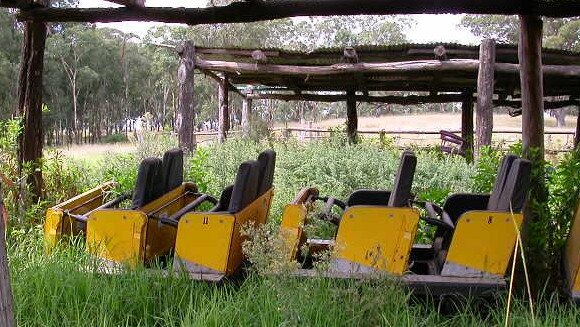
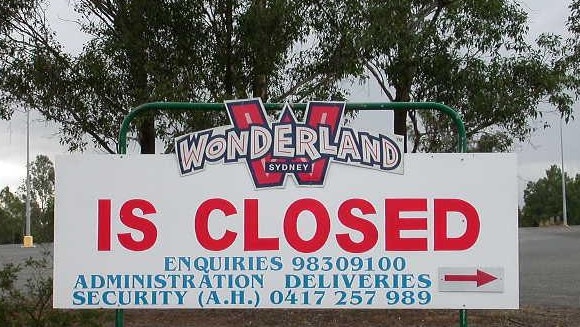
Mr Khan worked at the original Wonderland for nine years until it closed, he was a ride operator. — it’s been his life’s dream to bring the park back to its hey day ever since. Bush Beast II is a likely ride name if the doors open in future.
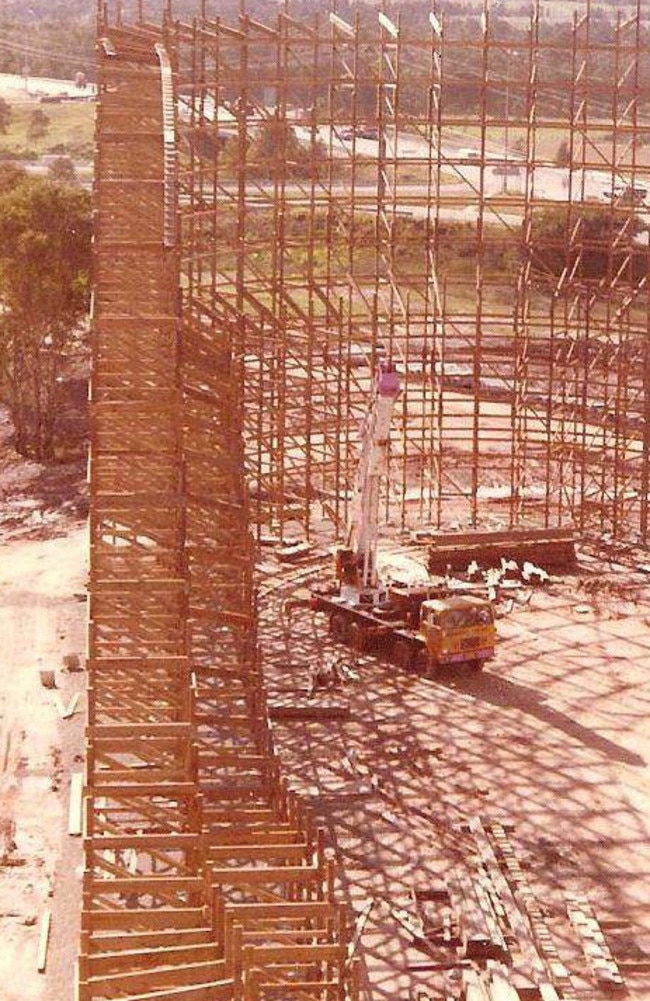
Magic Kingdom, Sydney
1970s-early 90s
Magic Kingdom closed a few years after Wonderland opened ultimately falling victim to the shiny new attraction nearby. It opened in the 70s and closed in the early 90s.
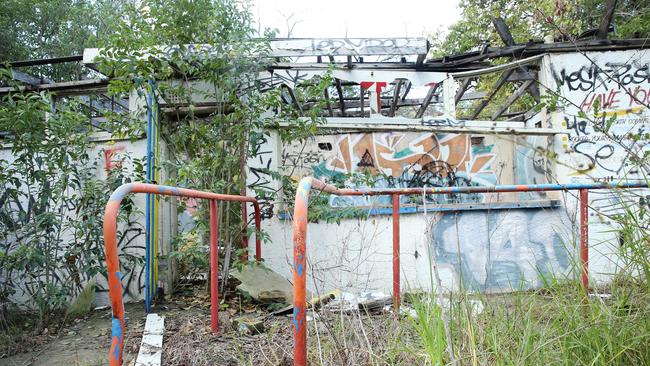
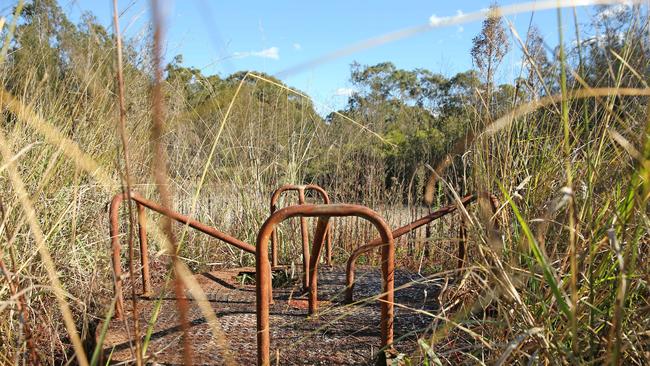
It used some of the rides from Luna Park which closed after the 1979 Ghost Train Tragedy. The land has changed hands a few time, it was last sold in 2014 and it’s in the process of being developed.
The Lansvale site on Hollywood Drive was for many years an abandoned explorers paradise, the side was littered with the rusty remains of the old carnival.
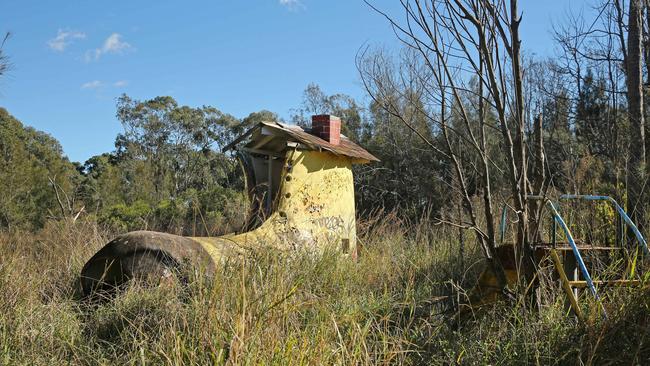
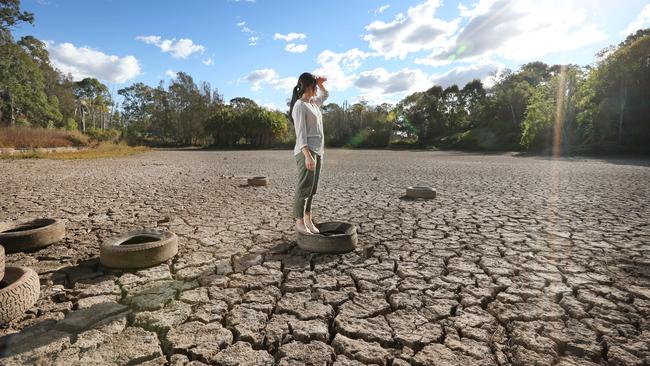
Sega World, Sydney
1997-2000
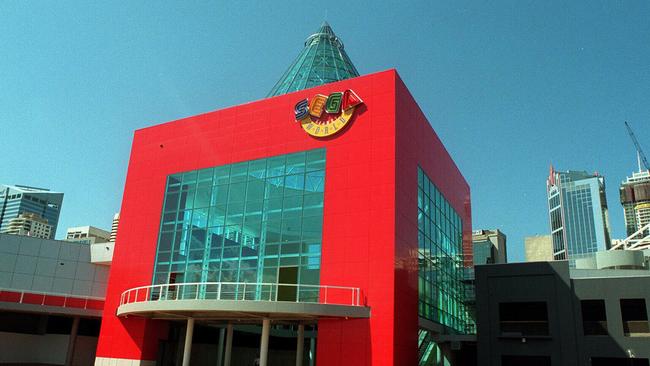
The life of the giant red and blue building smacked in the middle of Sydney’s Darling Harbour was incredibly short lived.
The indoor hi-tech amusement park once considered ‘Australia’s Disneyland’ lasted only four years. It was designed by gaming company Sega and emblazoned with Sonic the Hedgehog on the door.
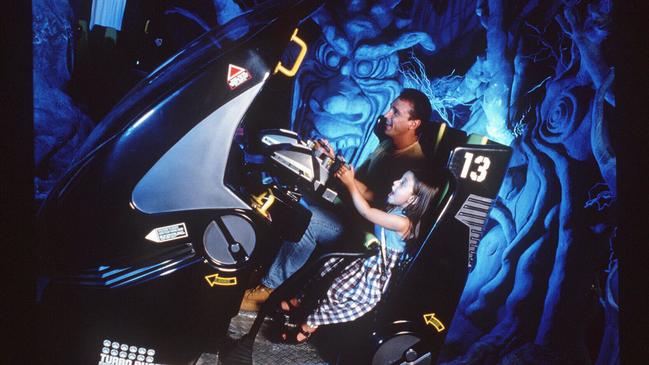
Despite the prime location the park suffered low attendance, it was hoped the Sydney Olympics would reignite interest from tourists but this never happened and the park closed in November 2000.
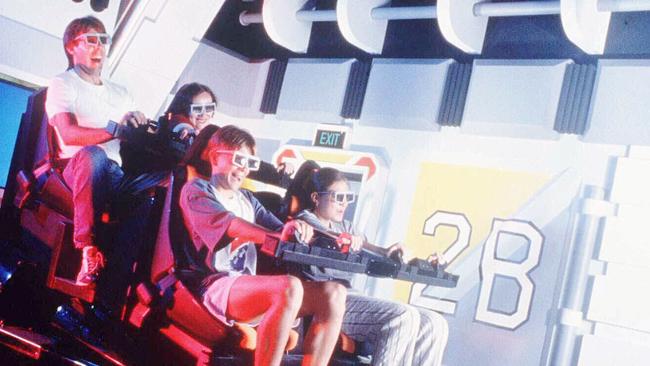
The building was eventually torn down in 2008 and replaced with Commonwealth Bank Australia’s global headquarters.
Rides included the Rail Chase, the Mad Bazooka and Aqua Nova.
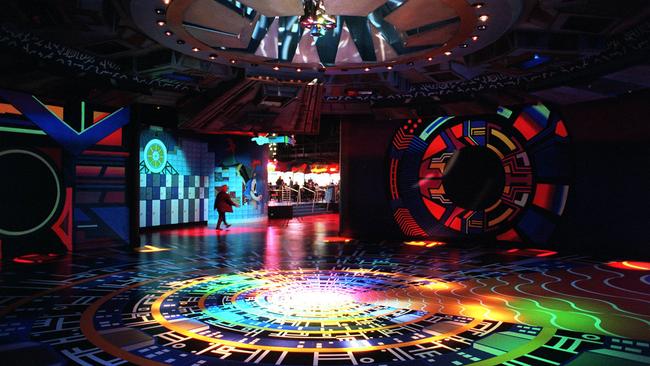
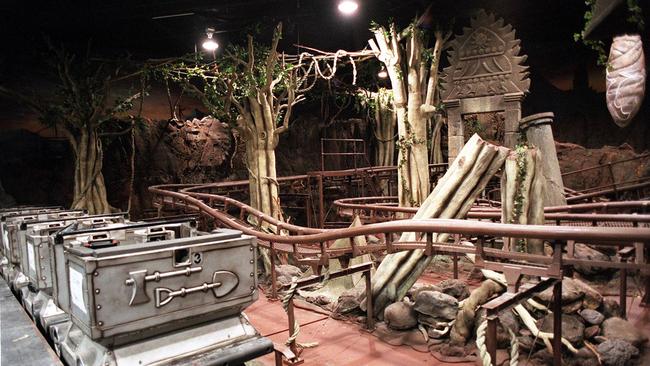
Old Sydney Town, Central Coast
1975-2003
If you went to school in NSW it was likely you went to Old Sydney Town at some stage.
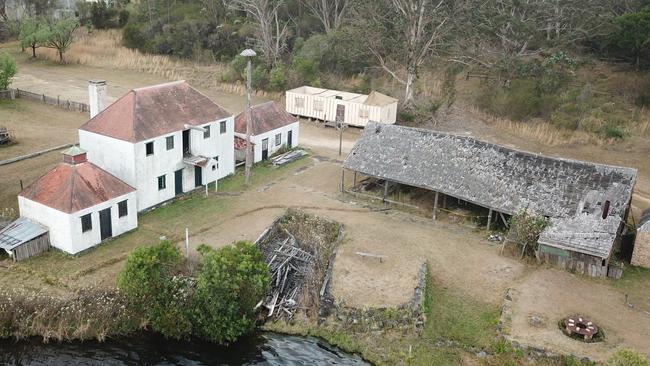
The museum and theme park was located at Somersby and paid tribute to Sydney’s colonial settlement in late 18th and early 19th centuries.
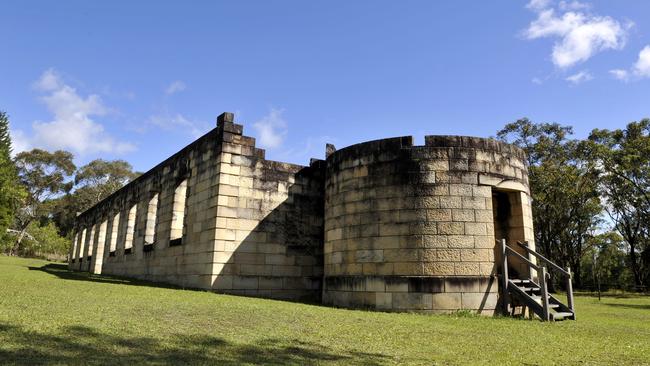
During its lifetime six million people attended OST.
In 1994-95 the site was even used to film episodes of Mighty Morphin Power Rangers (some more nostalgia for you).
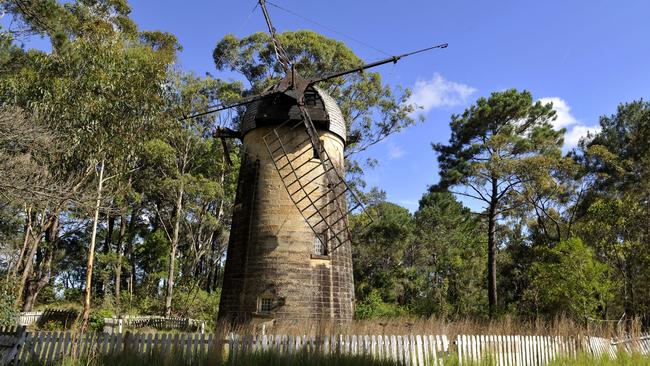
The park closed in 2003 and operators blamed a generation that wanted ‘instant gratification’ rather than a leisurely stroll through history. Since then it has been used for movie shoots.
Over the years there have been multiple talks of reopening the park.
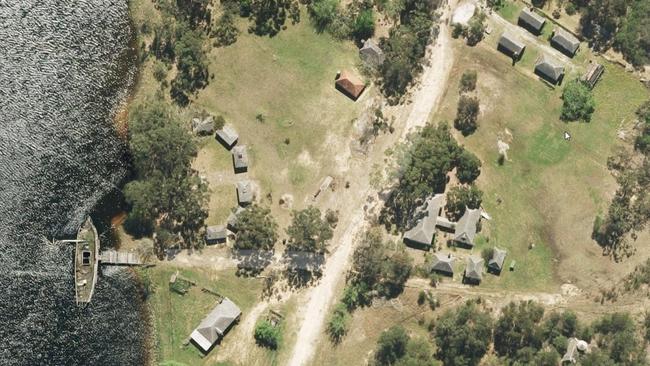
The former owner claimed he had been fighting Gosford council to change zoning on the land so it could be redeveloped.
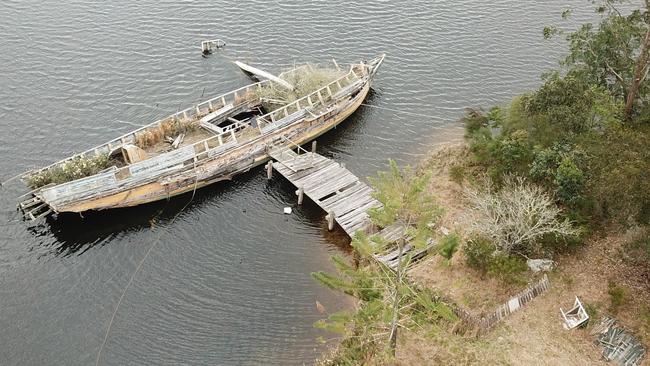
Earlier this year the land was put up for sale and it was snapped up.
Fantasy Glades, Port Macquarie
1968-2002
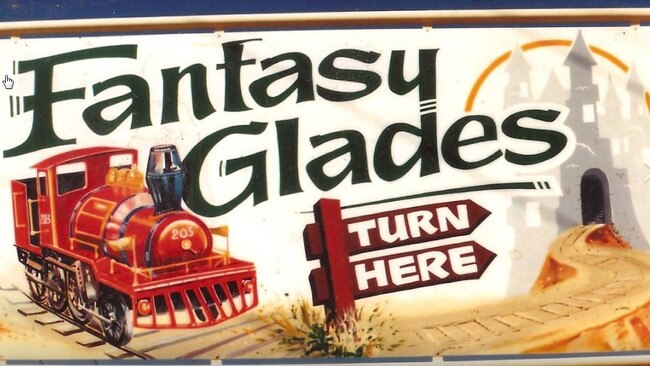
This small theme park known as ‘the magic of port mac’ opened in 1968 and it changed hands a few times until it was closed for good until 2002.
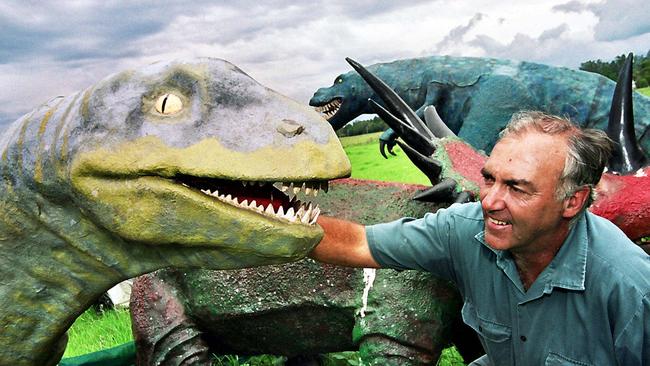
The theme park was created by couple George and Rosemary Whitaker, who had dwarfism.
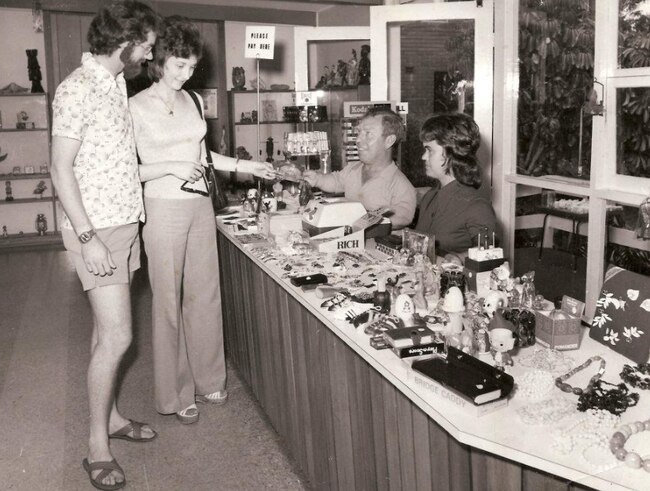
The park was known for its Disney-esque fairy tale and fantasy inspired attractions such as Cinderella’s castle, the Witch cottage and the Snow White mine. It was also home to a large pink magic dragon.
The park came alive on about two hectares of bushland in Port Macquarie.
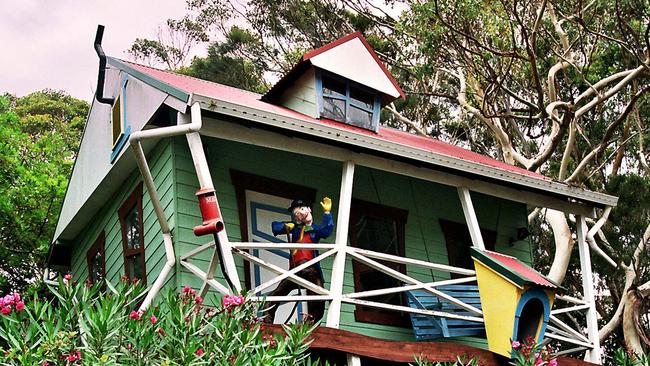
In 2015 it was put up for sale for $560,000.
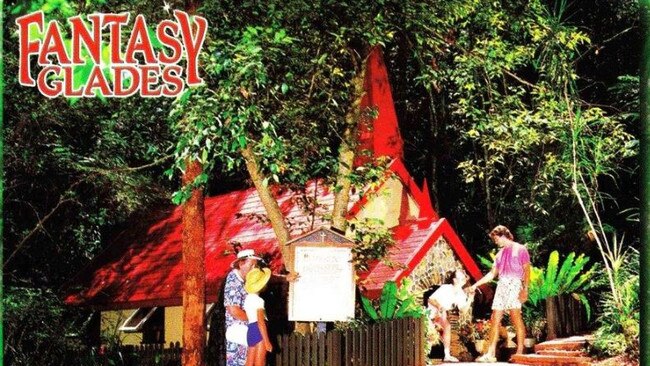
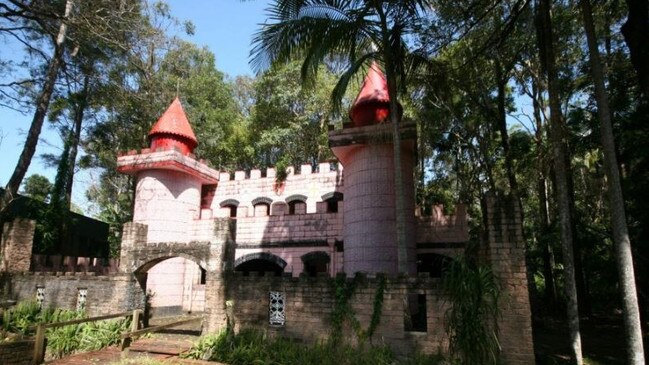
Leyland Brothers World, Kaurah
1990-1992
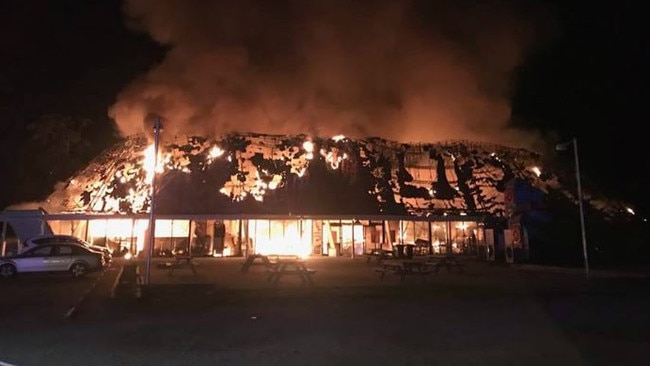
‘Of all the s***house roadside stops, this was one of the best’ one mourner wrote on Facebook when the former Leyland Brothers World went up in flames earlier this year.
The site opened with it’s iconic replica Uluru and rides in 1990 but it was sold 2 years later at auction after the owners Mike and Mal Leyland went bankrupt.
The replica became a popular stop ‘The Rock’ roadhouse for road trippers.
Before the fire, it was used as a service station and hosted up to 45,000 a year for school students on bush camping excursions.
Bullen’s African Lion Safari
1970s
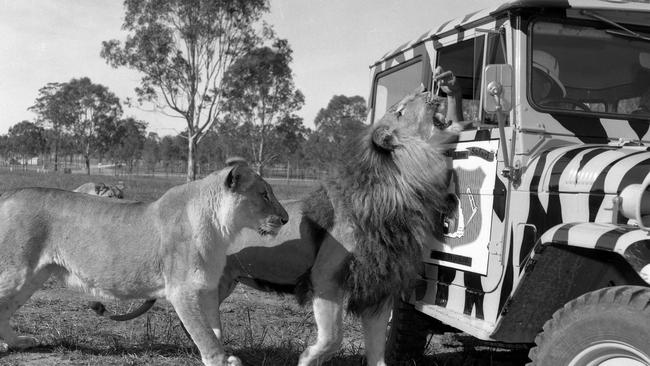
With locations also in NSW, Vic, South Australia and Queensland, this was operated by the circus family, the Bullens’ with locations popping up from the late 1960s to the early 90s.
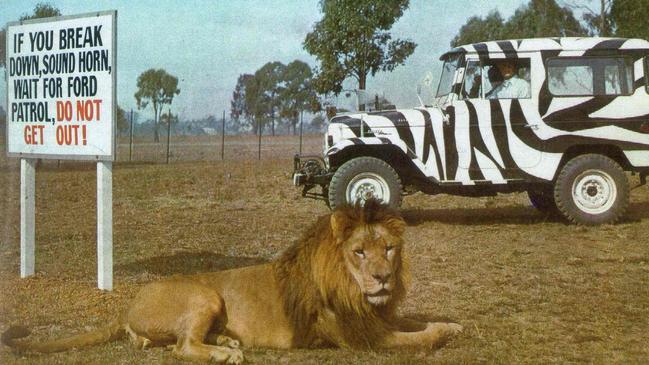
The African Lion Safari was just that — a drive through safari where you could see lions, tigers, bears, elephants and giraffes.
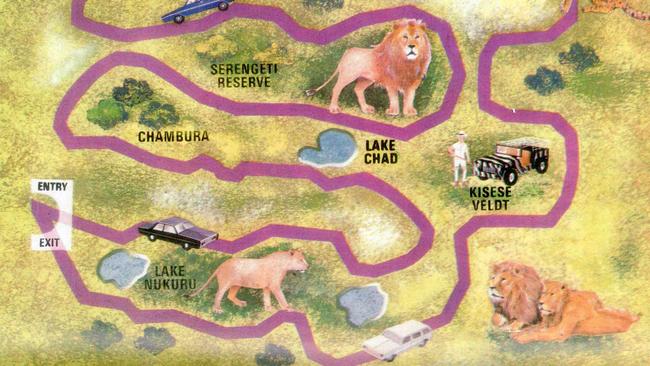
VIC
Wobbies World, Melbourne
1970-1999
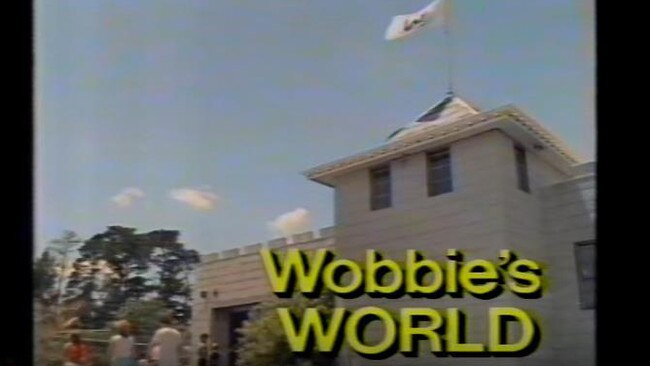
The Vermont South park became known for its TV ads but the park with the Whirliebird helicopter also had a log ride, golf course and more.
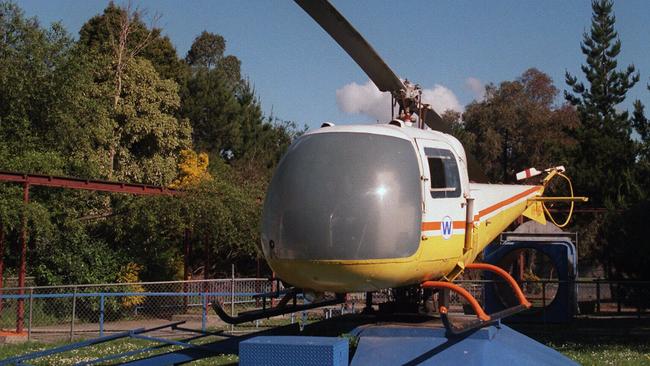
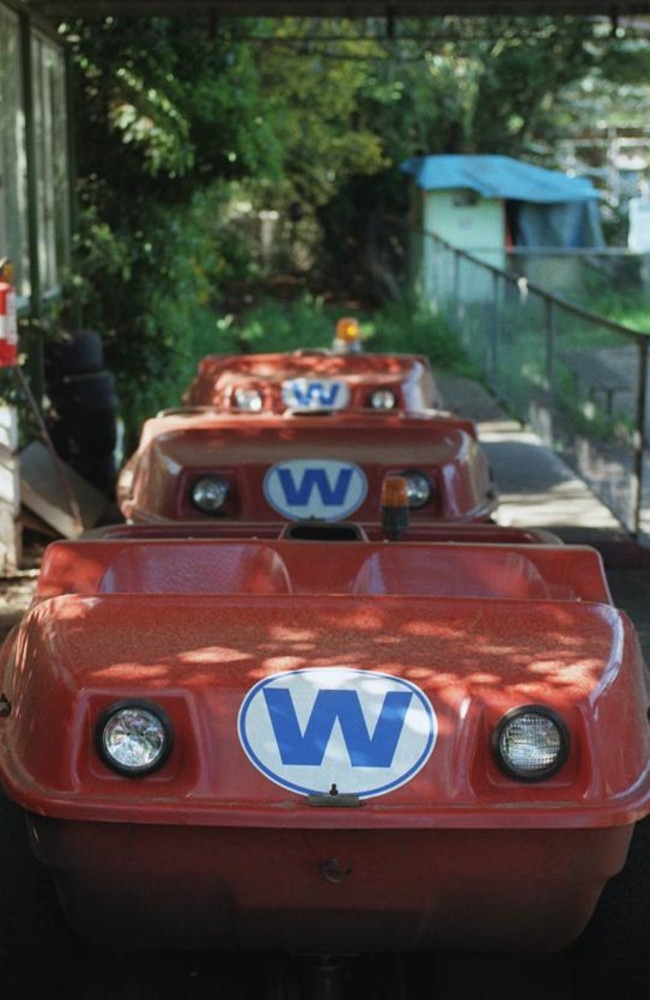
It closed in 1999 and the site became the home of Forest Hill police station.
The park was considered expensive in its time charging $36 for a family of four in 1994.
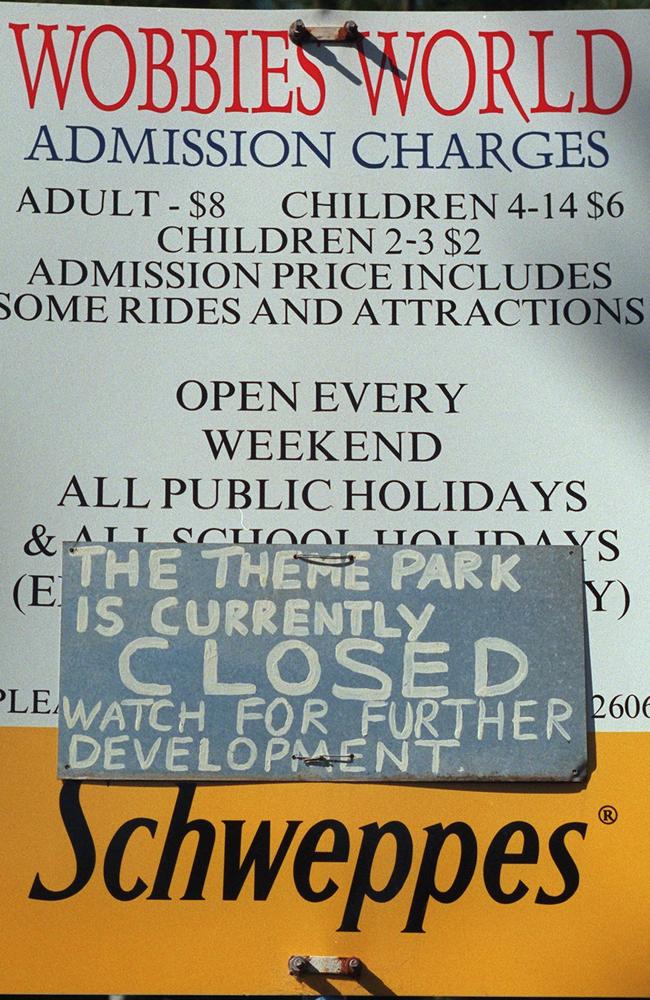
Dinosaur World, Creswick
1982-2002
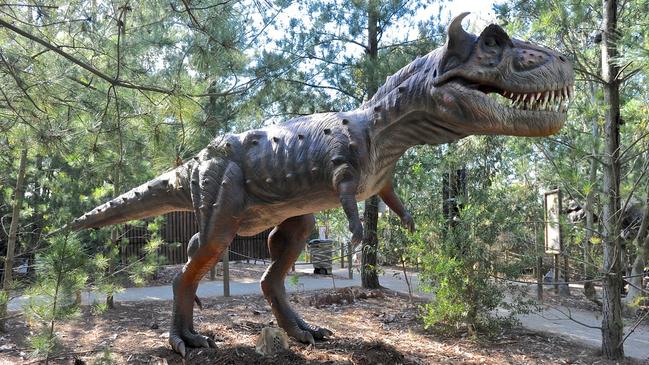
Also known as The World of Dinosaurs, this now-extinct playground was a tiny theme park that showcased life-size dinosaurs that were designed by the park’s first owner Bill Myers.
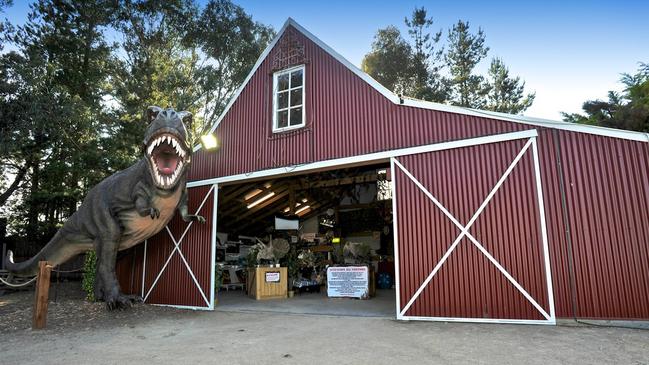
The park which initially charged $1.50 for adult admission and 60c for kids, closed down in 2002 with the owner citing the cost of insurance and Work Cover.
Leisureland Fair, Langwarrin
1984-1992
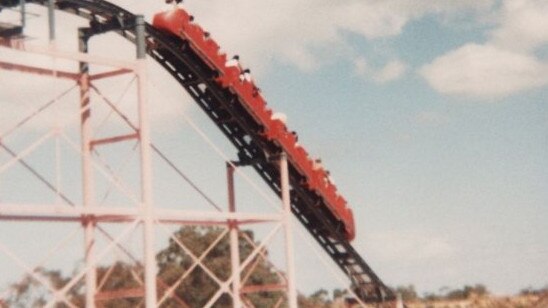
This now-defunct amusement park went onto become a housing estate that has a street named after it’s past attraction — Leisureland Drive.
Leisureland lived up to its name with a steel roller coaster, a log ride, waterslides and mini golf.
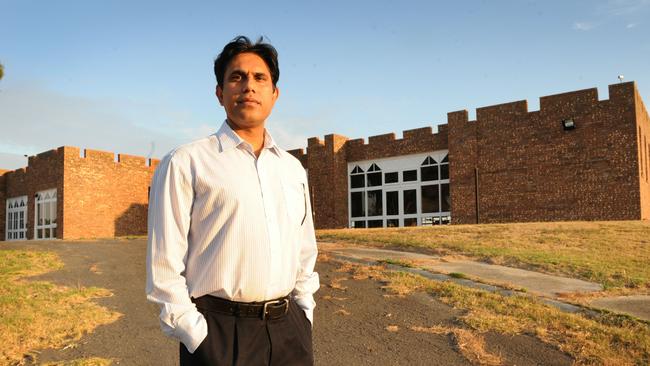
The area is now home to a Muslim community.
SA
Luna Park, Glenelg (and other states)
1930-1935
You may not know Sydney’s iconic Luna Park originally opened in Glenelg on Adelaide’s bayside.
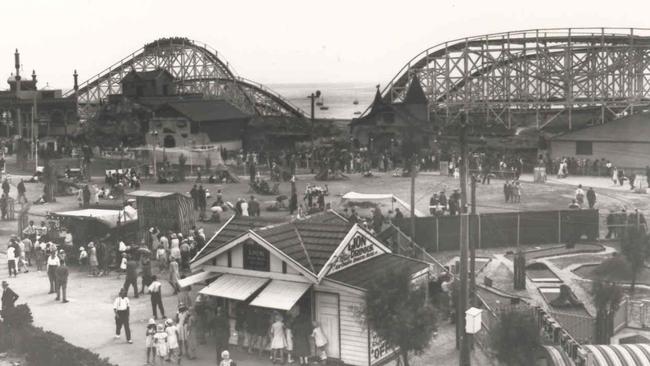
The park only lasted five years here before it shut up and its rides were relocated to NSW. This was reportedly due to tensions between the park owners and the council over expensive rent and being unable to extend their operating hours.
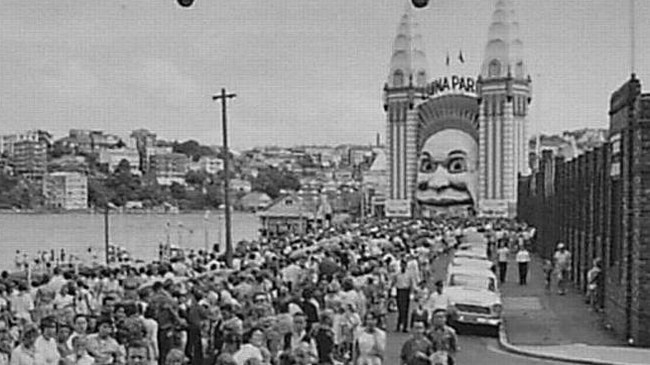
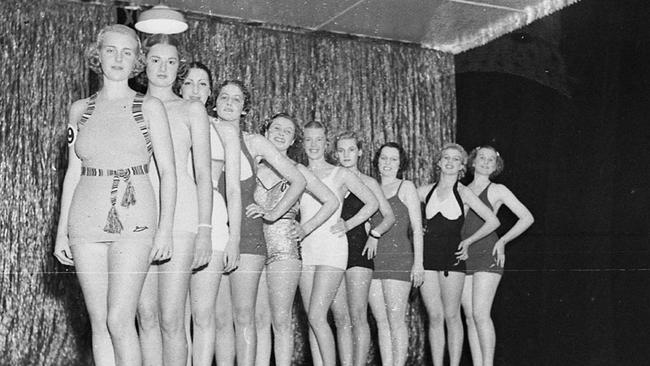
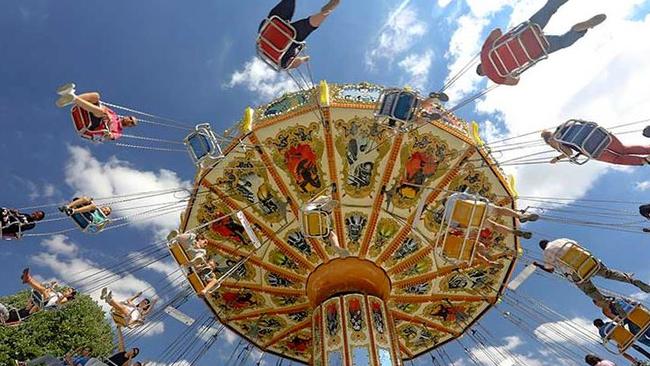
This Luna Park was inspired by similar theme parks in France and London.
It had a scenic railway and a Ferris Wheel.
Some of Glenelg’s residents were also unhappy about the park, claiming it was attracting undesirables.
Australia has seen five Luna Parks open since 1912, the first being on Melbourne’s iconic St Kilda Beach.
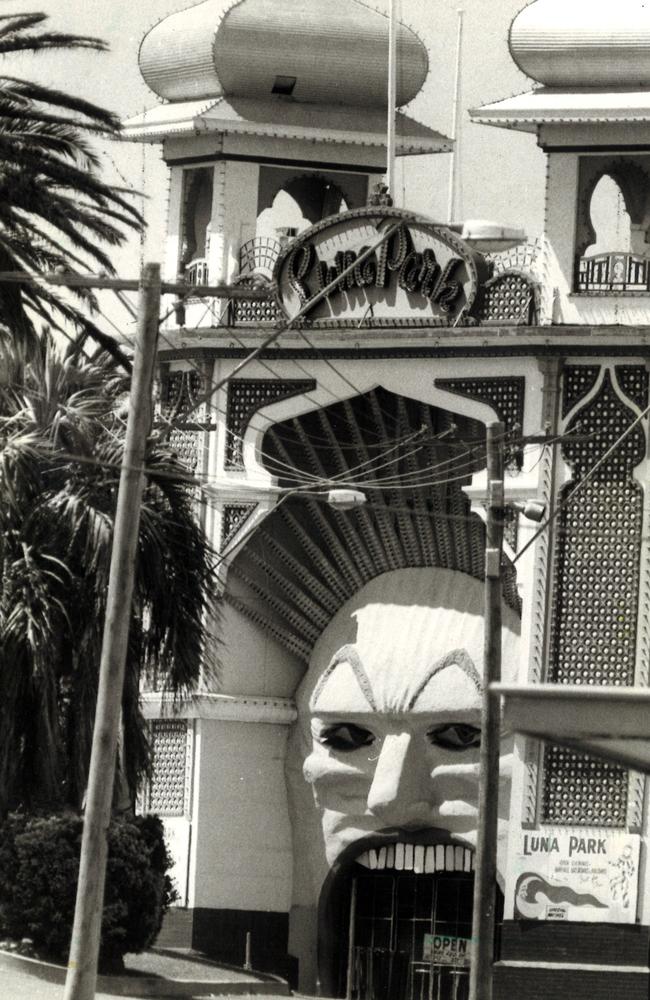
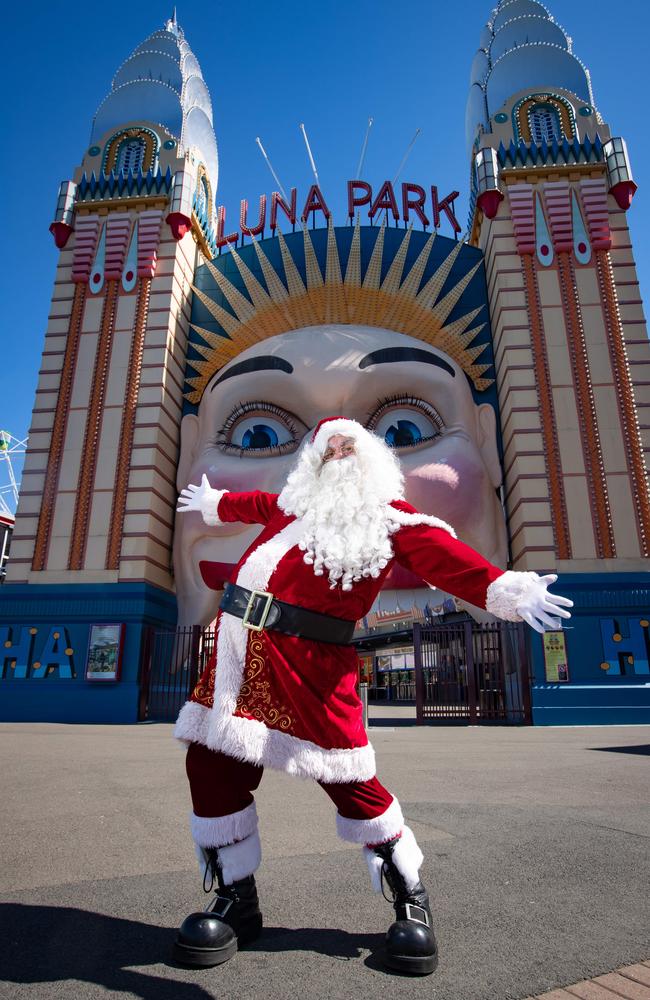
Only the Sydney and Melbourne parks are still operating, Luna Park Redcliffe, north of Brisbane closed in 1966 and Luna Park Scarborough, near Perth, closed in 1972.
The Melbourne venue boasts the world’s oldest continually operating roller coaster in the world.
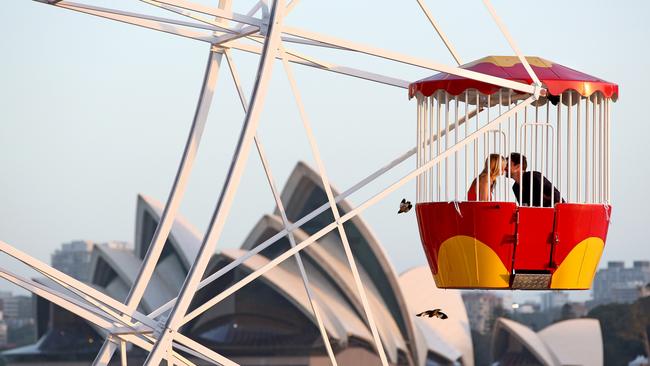
Like Dreamworld, the Luna Park name was tarnished by tragedy in 1979 when the Sydney venue’s ghost train caught fire. The blaze killed six children and one adult.
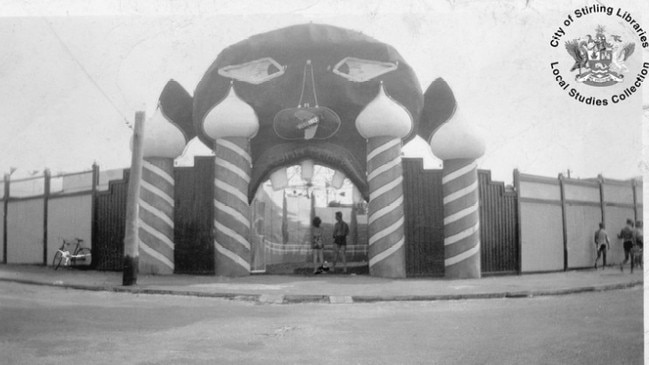
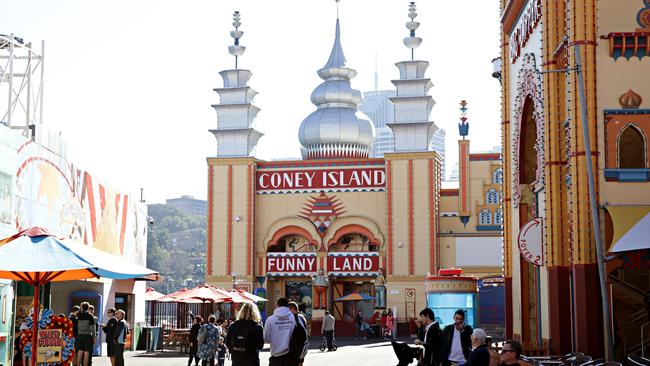
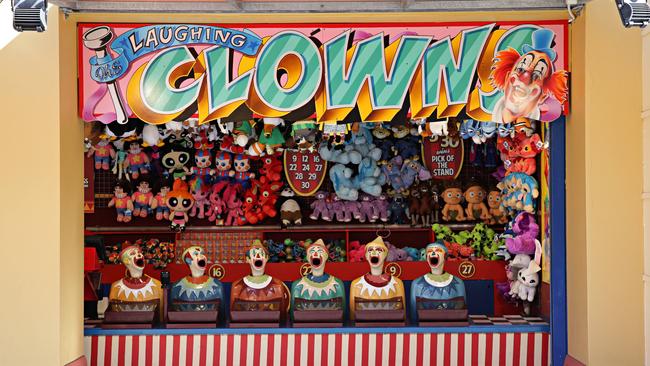
The Sydney park was immediately closed after the fire and most of the park was demolished.
The park was renamed Harbourside Amusement Park for a while before resuming its old name.
Dazzeland, Adelaide
1991-1998
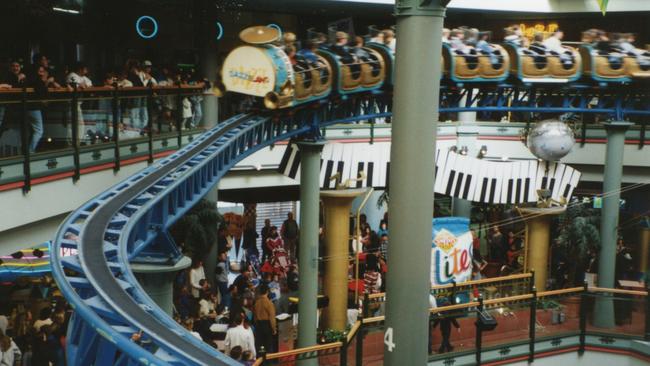
For a while Adelaide boasted the title of being home to Australia’s largest downtown shopping centre. This has now been well and truly trumped but for a while it was the case.
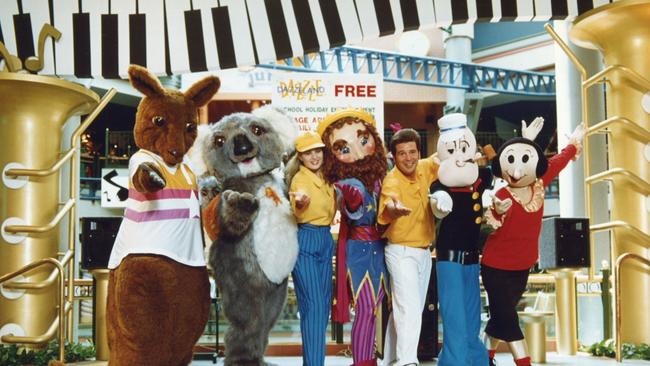
In its prime, Dazzeland was located at the top of Rundle Mall’s Myer Centre and its signature attraction was a roller coaster named Jazz Junction, which darted across the fifth level.
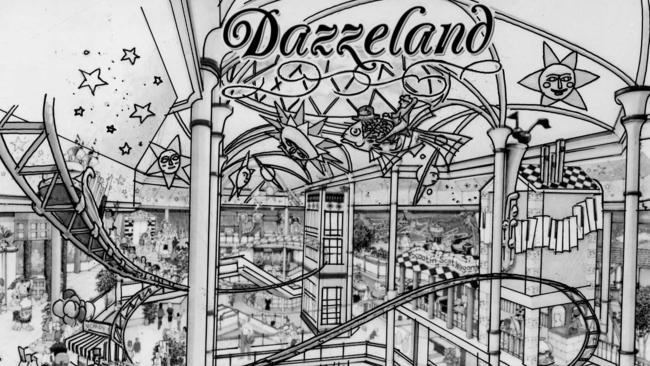
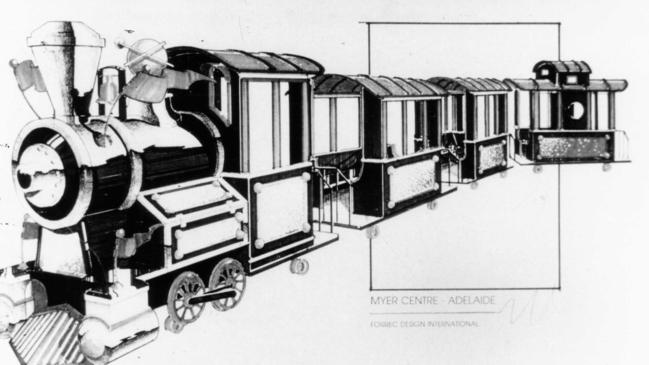
Dazzeland was a 90s kid’s paradise, with dogem cars, a carousel, a musical fountain and Lego — and a cheap as chips $5 gave you unlimited rides.
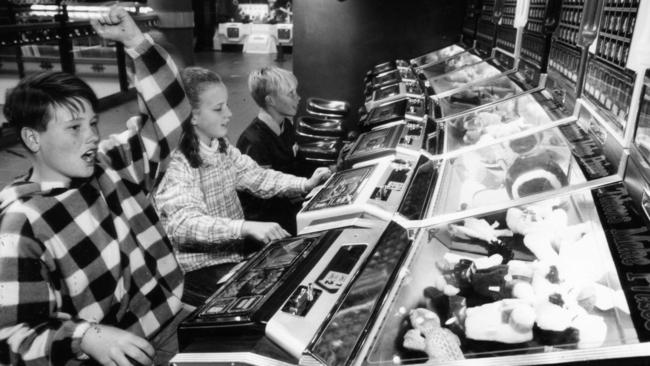
It was eventually closed and replaced with shops that paid more to be there and the remains of the iconic top floor coaster were finally removed in 2003.
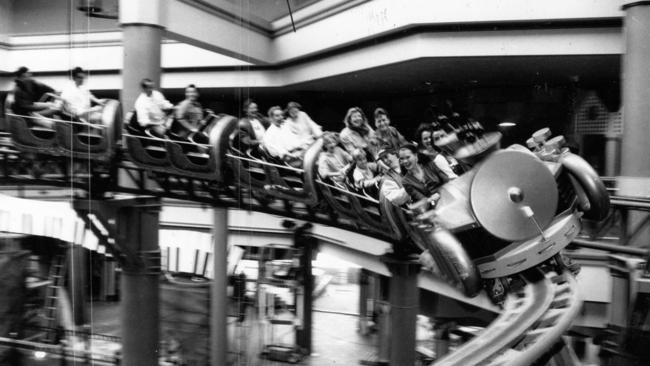
18 years after it closed, the Slingsby Theatre Company turned the old Dazzeland space into a performance space during the Adelaide Festival in 2016.
Today the top floors where Dazzeland’s screams of joy used to be heard are mostly deserted.
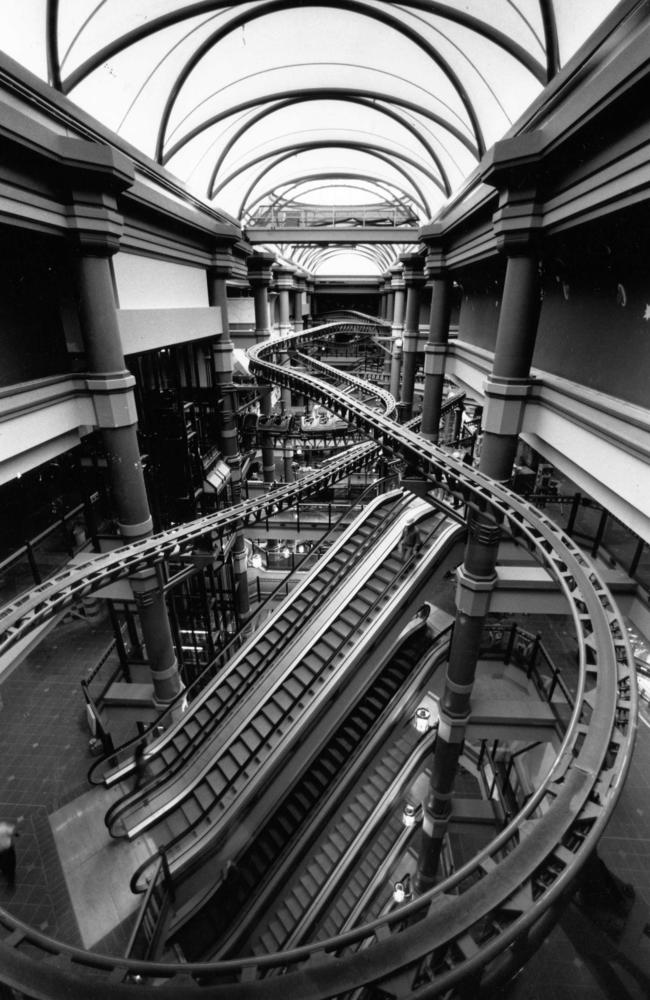
Magic Mountain, Glenelg
1982-2004
On a hot Adelaide summer the locals would flock to the Magic Mountain fun parlour. It was a big part of being a teenager there in the 80s and 90s.
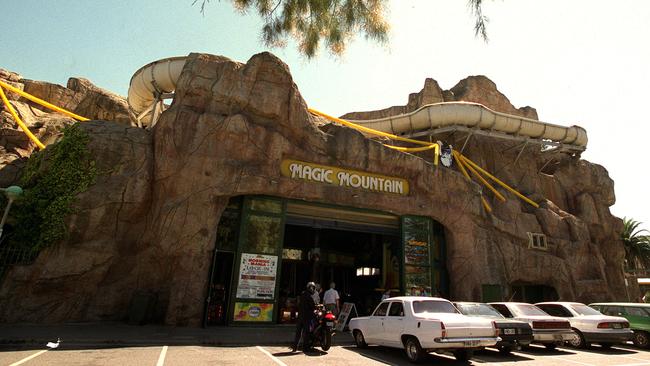
This theme park boasted the largest water slide in the southern hemisphere in its prime and it even offered its own currency, Dazzeland (above) also did the same.
The park was popular with passionate locals but was also criticised for looking like a giant dog dropping.
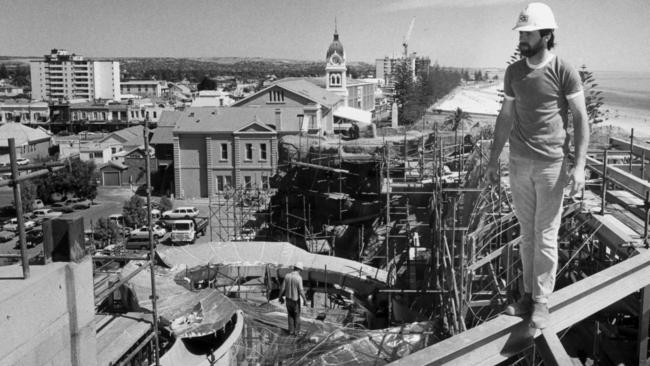
But while people ‘poo-pooed’ the design, they still saw the appeal and Magic Mountain provided fun for thousands of people who flocked there.
The parlour included waterslides, a carousel, mini golf, dogem cars, bumper boats and an arcade.
In the 80s the arcade machines would provide a load of fun for 20c a turn.
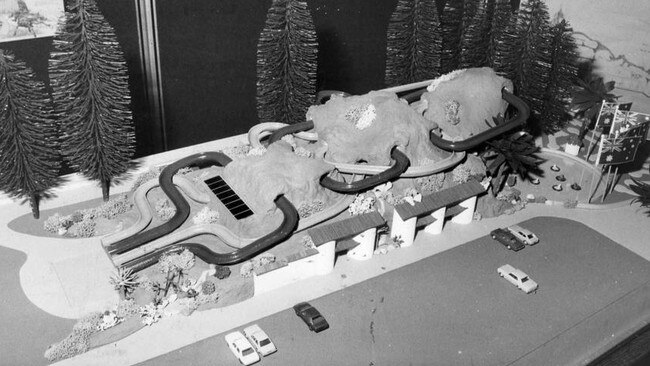
The magic was eventually lost when the park was demolished as developers moved in and build apartments and a hotel in its place.
But the loss of Magic Mountain was really felt by the locals and eventually another family entertainment venue moved in - The Beachhouse. It remains there today.
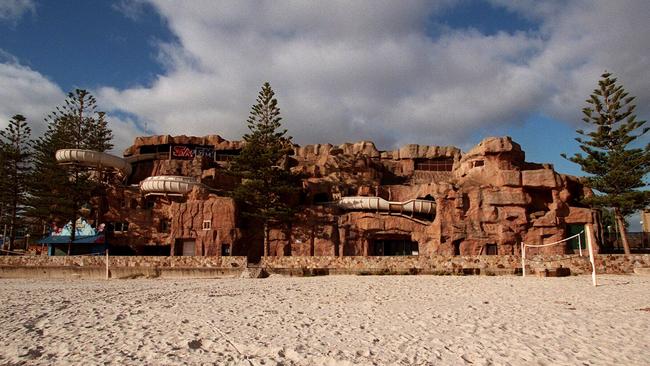
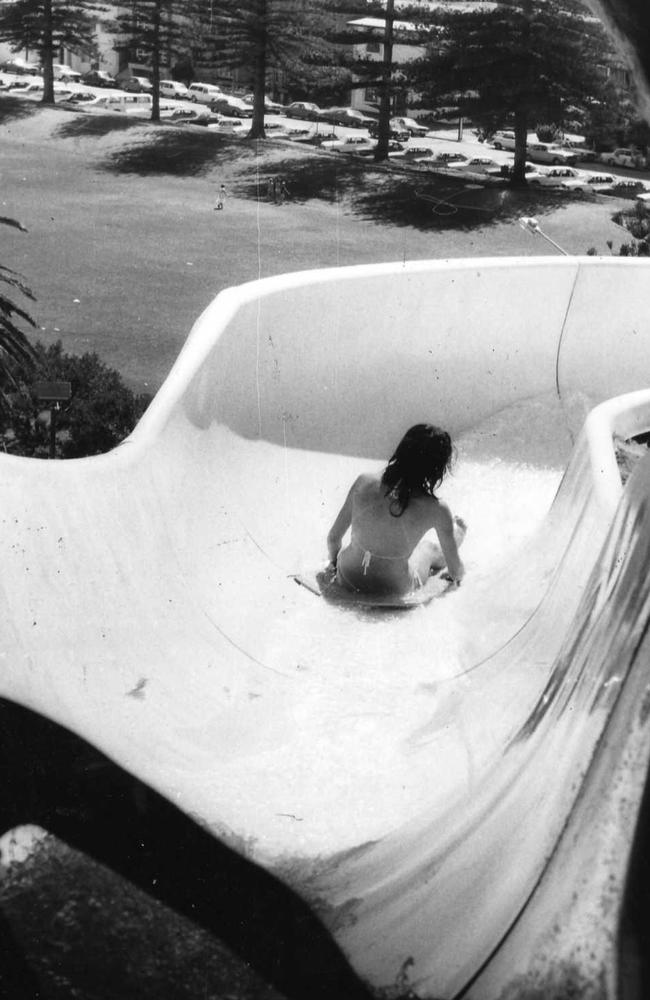
QLD
Magic Mountain, Gold Coast
1962-1991
The Gold Coast is now home to Australia’s biggest and most successful theme parks and has set the standard for the country’s amusement tourism.
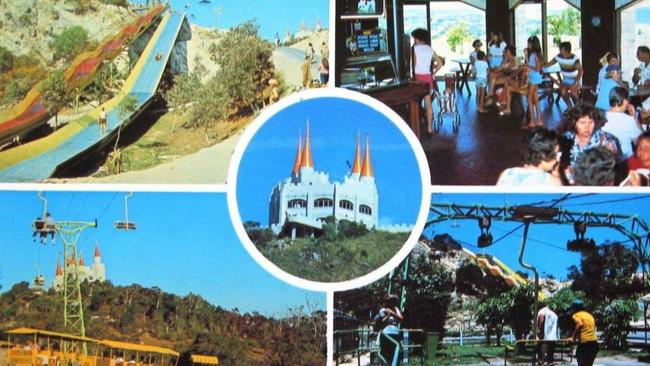
But the Goldy’s first theme park was Magic Mountain at Nobby Beach, and yes it was situated on top of a mountain.
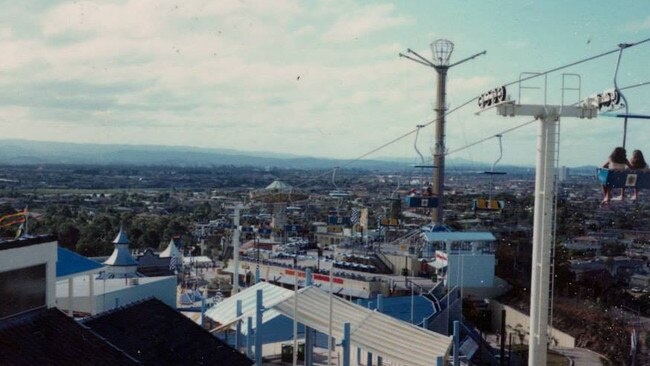
The park started with a chairlift and later added a Magic medieval castle was built on the summit.
The much-loved castle by the sea became a landmark for navigation.
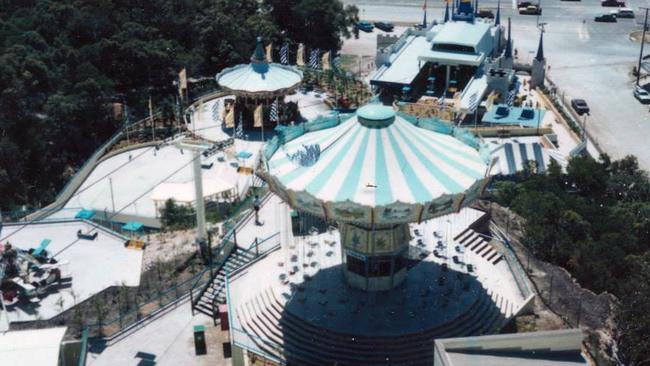
When the park closed it remained unused for a while until it was eventually sold and turned into the Magic Mountain Resort Apartments.
A street sign ‘Chairlift Avenue’ was named after the iconic people mover.
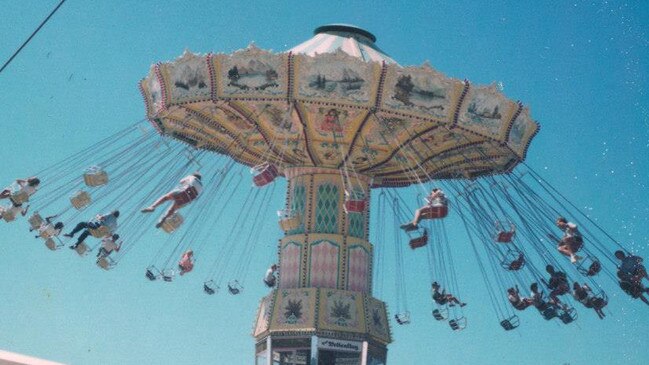
The original chairlift was moved to Dreamworld and the park’s Parachute Drop Tower was rehomed at Australia’s Wonderland for a while. Some of the castle’s turrets were also rehomed to the Dracula’s theatre restaurant at Broadbeach and they remained a prominent feature until 2015.
WA
Atlantis Marine Park, Two Rocks
1981-1990
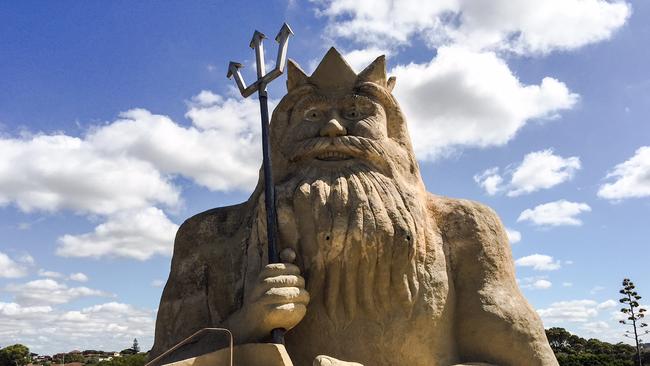
Just north of Perth this theme park paid tribute to the ocean god Neptune and had high hopes of boosting tourism to the area.
The goal was to make the area one of Australia’s “premier leisure recreation region,” serving as WA’s answer to the Gold Coast.
Initially it was a major feature of the late tycoon Alan Bond’s Yanchep Sun City plan.
But nine years after it opened it shut up shop and left Neptune behind, where he still sits today.
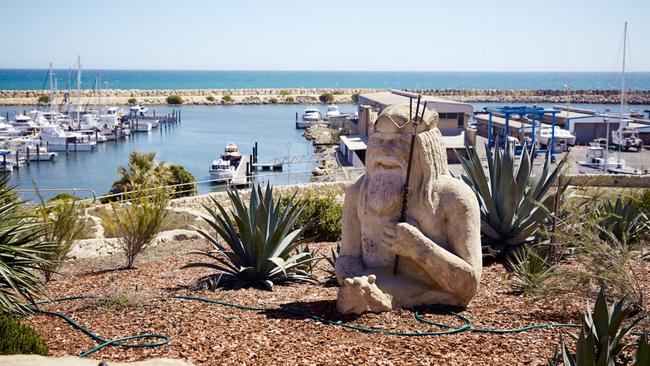
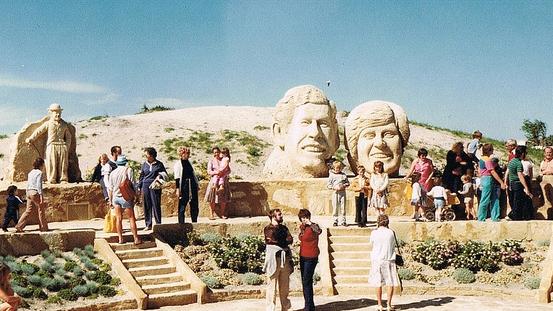
The park was initially a success, with families flocking to watch the live dolphin shows, swim and ride in pedal boats.
The chance at a photo with the King was also pretty enticing too.
But Atlantis eventually fell into financial ruin and was left abandoned. Over the years it has continued to be a fun park for vandals and urban explorers.
It’s also popular with dog walkers and Instagram snappers are still able to get their picture with the king if they want to. He’s not going anywhere anytime soon.
Helpful volunteers keep the king in tip-top condition so families can continue to enjoy day trips out to see him.
White City, Perth
1920s
Also known as Ugly Land, White City was a fairground which once sat on Perth’s prime foreshore until 1929.
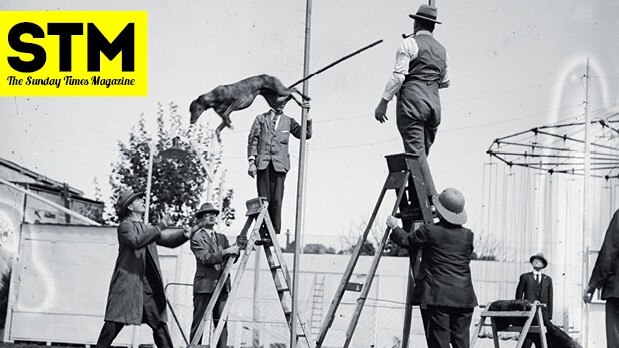
From 1922 it sat where the Elizabeth Quay bus and train station now calls home.
A fundraising organisation, the Ugly Men’s Association, used to manage the site and host events there for charity.
It was home to a ferris wheel and chair-o-plane, but also hosted dances, wood chopping and side show events such as live concerts and snake charming.
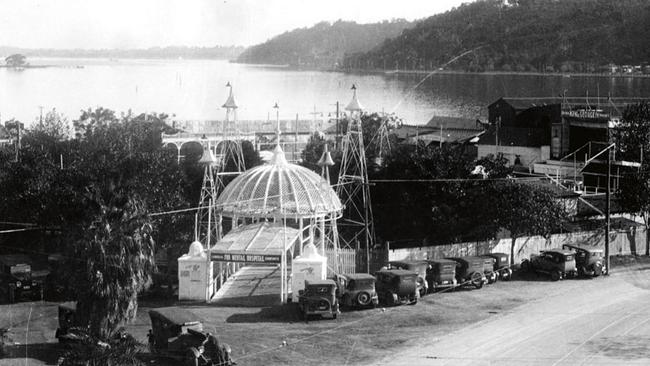
During its heyday it drew criticism in The West Australian newspaper, with community groups taking offence to its existence. They viewed it as a larrikin magnet and a place that encouraged menacing youth.
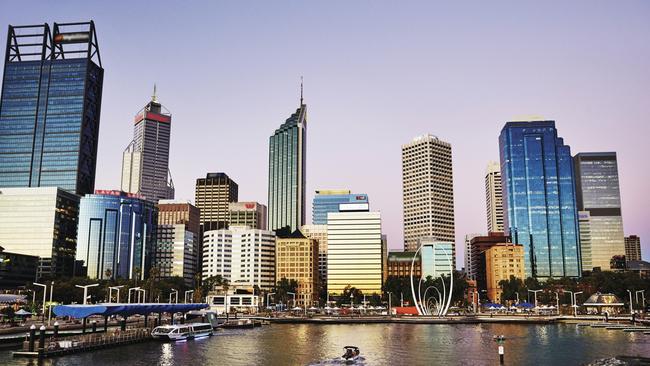
A few years after opening the naysayers won and White City closed for good.
The area was eventually replaced by the WA Housewives Association and also became a soup kitchen for the poor during the Great Depression.
Originally published as Thrills of the past: Australia’s forgotten theme parks and what kept them alive at the time


